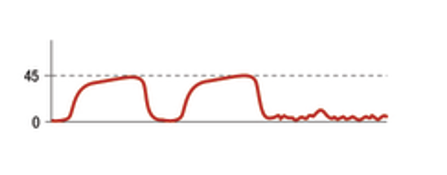ACLS EP Chapter 6 Quiz
ACLS EP Chapter 6 Quiz
Quiz Summary
0 of 6 questions completed
Questions:
- 1
- 2
- 3
- 4
- 5
- 6
The results of your practice test are waiting! Just fill in your email address in the box below, and we will share your results. You’ll only need to enter your email one time. After taking your next practice exam, you’ll receive your results as soon as you click on “Submit.”
Once you pass five practice tests, a 20% discount coupon will immediately be sent to the email address you provided.
You have already completed the quiz before. Hence you can not start it again.
Quiz is loading…
You must sign in or sign up to start the quiz.
You must first complete the following:
Results
Time has elapsed
Try Again. You didn’t get a passing score.Congratulations! You Passed.
You got 0 out of 0 correct and scored 0. Review your incorrect answers and try again.
Earned Point(s): 0 of 0, (0)
0 Essay(s) Pending (Possible Point(s): 0)
Categories
- Not categorized 0%
Earn a 20% Discount on Your Next Certification Course!
ACLScertification.org is proud to offer a 20% discount to students who successfully pass 5 of our practice tests in one sitting. Currently, you have passed 0 of the 5 required tests. Start testing your skills and earning your discount now in our Practice Exam Section.
- 1
- 2
- 3
- 4
- 5
- 6
- Answered
- Review
-
Question 1 of 6
1. Question
Select the best response from the answer choices following each question.
- A 22-year-old man was just in a major motorcycle accident. There is a concern for a cervical spine injury as well as facial fractures. He is unconscious, but breath sounds are evident with continued chest rise. The jaw thrust maneuver has failed to open the airway. What is the best initial management of his airway at this time?
CorrectIncorrect -
Question 2 of 6
2. Question
2. What is an associated physiological change from hyperventilation in the cardiac arrest patient receiving CPR?
CorrectIncorrect -
Question 3 of 6
3. Question
3. Which of the following is the role of end-tidal carbon dioxide during resuscitation?
CorrectIncorrect -
Question 4 of 6
4. Question
4. During resuscitation, until the provider knows the patient’s oxygen saturation, oxygen supplementation should be provided at what percent FiO2?
CorrectIncorrect -
Question 5 of 6
5. Question
5. Which one of the following physiologic measurements best aids the team in assessing the quality of CPR efforts?
CorrectIncorrect -
Question 6 of 6
6. Question
6. A 56-year-old man is in cardiac arrest. As the patient’s oxygen saturation is persistently low and ventilation is inadequate, the decision is made to intubate. Following placement of the ET tube, waveform capnography along with auscultation and evaluation of chest rise is used to ensure correct tube placement. Following ROSC, the patient is stabilized and taken to get a chest X-ray to rule out a primary pulmonary condition. Continuous waveform capnography reveals this change?

What is the next step in management?
CorrectIncorrect